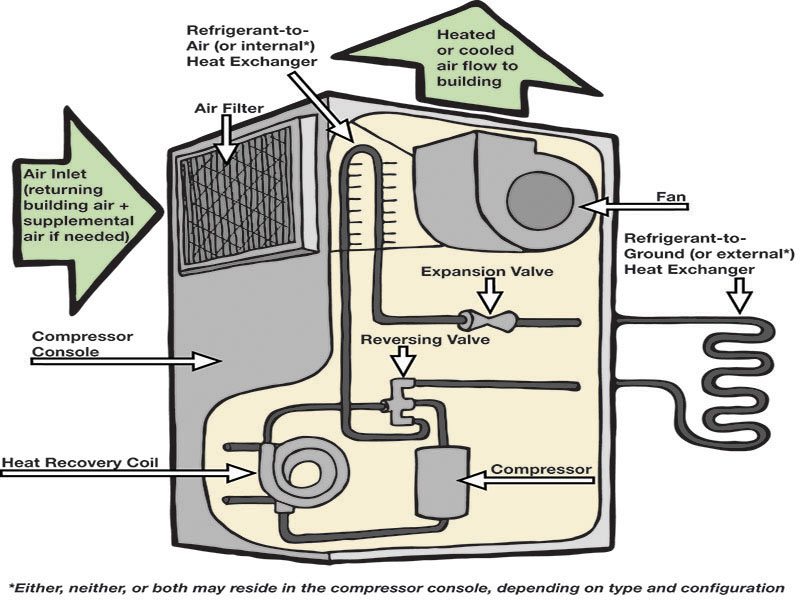
There are two basic types of heat pump technology – air source and ground source. In an air source heat pump, the equipment uses the outside air to provide the means for heating and cooling your home. A ground source heat pump uses good old Mother Earth’s dirt.
Since ground source heat pump operation is a little easier to describe, I will start there. Once you get a short distance below the surface, around a depth of four feet, the temperature of the ground stays a reasonably constant 50 - 55 degrees Fahrenheit year-round. Have you ever gone into a cave or tour a cavern? In the summer, it is nice and cool. In the winter, it seems cozy and warm. What you sense is the difference between the outside temperature and that of the cavern below ground.
Ground source heat pumps use this temperature difference to heat and cool. These systems need some sort of heat exchanger installed underground, either vertically or horizontally, and filled with a fluid. The equipment at the house itself resembles a typical HVAC system.
It uses pumps and compressors to move the fluid through pipes inside the house and in the ground where it picks up or gives off heat, depending upon the need. The process is rather simple, using a fluid to move (or pump) heat from one place to another. Air source heat pumps may seem harder to grasp. How can such a system cool my home when the outside air is so hot? Or, heat it when it is so cold?
Again, the mechanics of the system take advantage of very small differences in temperature using the proper compressor and refrigerant mix. Just like its ground source cousin, the air source heat pump moves heat from one spot to another. The difference is that the medium to exchange heat is the outside air, rather than the ground. Both air source and ground source heat pumps use refrigerant to capture the heat and carry it to where it is exchanged – either in the ground or using the outside air.
Heat pumps are very efficient, much more so than traditional heating and cooling systems. Let’s use a heat pump with a COP (coefficient of performance) of 3.0 as an example: For every unit of energy used, the system produces three units of heating /cooling. It’s not a bunch of hocus pocus – just that law of thermodynamics.
Efficient as they may be, it should be noted that heat pumps can have drawbacks. In extremely cold climates, air source models lose their ability to heat effectively at around 17 degrees Fahrenheit. Below that temperature, they have to use resistance electric heat to keep up and can quickly become expensive to operate. In temperate climates, they are likely your best choice for heating and cooling, especially for forced air applications. While some companies have worked to build a cold climate model, it is still a work in progress.
Ground source systems can operate in nearly any climate and work well with both baseboard hot water and forced air systems. However, they can be expensive to install because of their need for a ground loop of some sort.
Recently, a number of companies have introduced heat pump water heaters in response to EPA rulings to bring this efficient technology to domestic water heating. While the jury is still out, many of the same air source benefits and drawbacks apply, including a steep price tag at present.
Heat pumps, properly applied, can make a world of difference to your monthly bill as well as to your comfort.
Remark:
Some of the articles are taken from the Internet. If there is any infringement, please contact us to delete it. If you’re interesting in heat pump products,please feel free to contact OSB heat pump.

